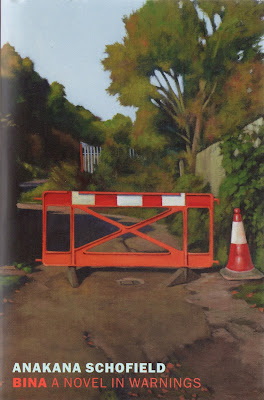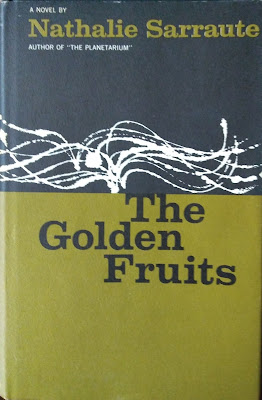Oh, what a terrible year for the world at large, but what a wonderful year of reading! I've worked from home on average three days a week this year, spending two days in the office, and it has really affected my quality of life even more than I could have imagined. Subtracting the stress and strain of a commute, adding the comfort of wearing shorts and a t-shirt for work, subtracting all the distractions of the office (and the shady neighborhood in which it's located), adding the mood-lightening sunshine our apartment receives most days and the mental and physical health benefits of lunchtime workouts, it's been a revelation of how civilized life can be even while getting one's work done just as well as ever. And this of course is not to mention that that commute time can now be used for reading, so it has been an extraordinarily fruitful year!
Of course, if I could make the horrors and frustrations of covid for others go away with a snap of the finger, I would happily give up these benefits, but alas I don't have that ability, so I will make do by being very thankful and aware of how lucky we've been. And for now, at least, our office is continuing to allow us to work from home three days a week indefinitely, so here's hoping 2022 will be another excellent bookish year.
Even allowing for the 12 non-blog-related titles I mentioned last week in my first ever UNfurrowed Dozen (see here), it was terribly difficult getting this list down to 12 blog-related titles. With my addictive reading of numerous titles by a few authors, the list could have been completely dominated by D. E. Stevenson, Monica Stirling, and Violet Trefusis, so I've had to rigorously limit myself to one or two titles by each. DES's The Tall Stranger and The Blue Sapphire, two of our titles being released next week from Dean Street Press, were near misses, as were the two early non-mystery titles by Felicity Shaw, later better known as mystery writer Anne Morice (see here). Then there was the delightfully enjoyable (but pricey!) Emily, by Hilda Stewart Reid, which I discussed here. Two children's titles, Dorita Fairlie Bruce's The Bees on Drumwhinnie (1952), one of her historical Colmskirk novels, and Catherine Christian's Diana Takes a Chance (1940), which I didn't get around to reviewing, would also likely have made the cut in a slower year.
And as you'll see, I'm forced to risk irritating and annoying you with my top pick of the year. It was a choice between being a coy little tease or actually lying to you about the best book I read this year, so I've gone with the former…
And now, in the flesh, I give you the Dozen.
12) MARY CLIVE (as HANS DUFFY), Seven by Seven (1933)
Best known for her later memoir/novel Christmas with the Savages, Clive wrote four earlier novels using the Duffy pseudonym. The other three have proven impossible to get my hands on, but this one was a delight, evoking (if not bettering) Evelyn Waugh and demonstrating once and for all how unjust the process by which some books are remembered and treasured and some fall by the wayside really is.
11) ISOBEL STRACHEY, First Impressions (1945)
And here is perhaps another example of said injustice. Strachey was taken quite seriously in her time, and is an absolutely brilliant metaphorist above all else ("The curate stood beside him in a curious toppling position. His clothes looked as though they were being blown off him although there was no wind."), but of course she's now forgotten as well. I read three of her novels this year (one still to review) and have four more to look forward to in the New Year.
10) IVY COMPTON-BURNETT, Daughters and Sons (1937)
My favorite novel yet by one of my favorite authors, though one that most readers either love or hate. If you must read just one ICB, this one, described as "one of the lightest and most comic of her novels" (though still delightfully bleak and morbid), is the one to try.
9) DOROTHY LAMBERT, Scotch Mist (1936)
Most of you know that in 2020 Dean Street Press reprinted Dorothy Lambert's wonderful village comedy Much Dithering, from 1938. I've since read a handful more of Lambert's novels, with varying results, but this year I found another treasure in this holiday frolic set in a Scottish boarding-house reluctantly managed by the increasingly impoverished Neil McPherson. Alas, more or less impossible to find, but perhaps one day we'll be able to reprint this one too?
8) NAOMI ROYDE-SMITH, Outside Information (1941)
A bit rough around the edges as it was compiled as events were actively unfolding, and perhaps all the better for it, this combination of diaries and letters (including a few from friends like Margaret Kennedy) by a prolific novelist provides some irresistible reportage on the Blitz, supplemented with humor, occasional poignancy, and vivid personality. An excellent complement to Frances Faviell's A Chelsea Concerto.
7) D. M. LARGE, The Quiet Place (1941)
For somewhat lighter reading about the early days of the war and the Blitz (albeit from a distance), this novel about the Irish O'Hara sisters, who open their quiet country home to paying guests seeking escape from bombs is a lovely, funny, warm-hearted book about the idiosyncrasies of its eccentric characters, who find the war creeping up on them even in the Irish countryside.
6) DOROTHEA TOWNSHEND, A Lion, a Mouse, and a Motorcar (1915)
Just what the doctor ordered for pure giddy escape, this utterly daft spy adventure/comedy rollicks along like nobody's business. Delia Gwyn, a rector’s daughter, finds herself swept into international intrigue, complete with Russian princesses, a short stint in a Spanish prison, a near miss of an assassination attempt, and a dramatic rescue from a kidnapping attempt. It's completely implausible, but no less fun for that, and I send my thanks again to Kathy Reed, who dared to send her vanishingly rare copy of the book to San Francisco for me to read. It has happily returned safely home now.
5) D. E. STEVENSON, Kate Hardy (1947)
VERY difficult narrowing down the DES titles I read this year to only one. Many of the 11 novels we're reprinting in just a few days (see here if you've somehow escaped knowing this!) were, believe it or not, new to me this year, and I loved them all. The Tall Stranger and The Blue Sapphire, mentioned above, are loaded with charm, and Young Mrs Savage is a perfect holiday story. But I finally settled, for purposes of this list, on this lesser-known gem, which I never got round to writing about in any detail. A novelist in the immediate postwar years spontaneously buys a home in the country and finds the country may not allow her much more time for writing than London does! (This one has been virtually impossible to find, but not anymore, as of next week!)
4) MONICA STIRLING, Dress Rehearsal (1952)
3) MONICA STIRLING, Ladies with a Unicorn (1953)
The author I read more than any other this year might well have dominated this list if I'd allowed her two, but these two titles represent, for me, her best efforts in two different styles. Dress Rehearsal is largely a comedy set in a girls' boarding school and, despite the publisher's assurance that it's not autobiographical, reflects in almost every detail Stirling's own upbringing. Ladies with a Unicorn, meanwhile, is in what I call Stirling's Proust Lite style, with its characters' present-day, postwar dramas largely filtered through their wartime traumas. Scintillating elegance and high fashion in the Roman film industry combines with gritty recollections of darker days, and I found the combination impossible to put down.
2) VIOLET TREFUSIS, Tandem (1933)
Dear Violet could also have dominated this list, but this one is the clear winner for me out of her six novels available in English (all of which I read this year, as well as cursing the literary stars that her other two haven't been translated from French). Beginning in 1892 with sisters Pénélope and Iréne in girlhood, Tandem soon leaps forward to show us the girls getting married and then their very different (but intriguingly echoing) married lives. The characters are possibly based on Violet's friends, Anna de Noailles and Princesse Marthe Bibesco (mentioned in last week's UNfurrowed Dozen), also novelists. Broderie Anglaise, about Violet's romantic triangle with Vita Sackville-West and Virginia Woolf, has always got more attention than this novel, understandably but definitely not deservedly.
1) ?????????????????, ????????????????
And finally… Just in the past couple of weeks, my planned list has been upended by an email revealing (and then sending) a manuscript of an unpublished novel, previously thought to have been lost, by a favorite author. I can't say much more (and not just because of a perverse urge to tease), but the novel is sooooooo lovely and brilliant and funny and poignant, it has to occupy this spot. It's not any exaggeration to say it's by far my favorite read of the year, and I hope it will some day be a favorite of yours too…
And there, teasing aside, you have my favorite reads of the year. Now it's time for you to share your happiest discoveries!


























